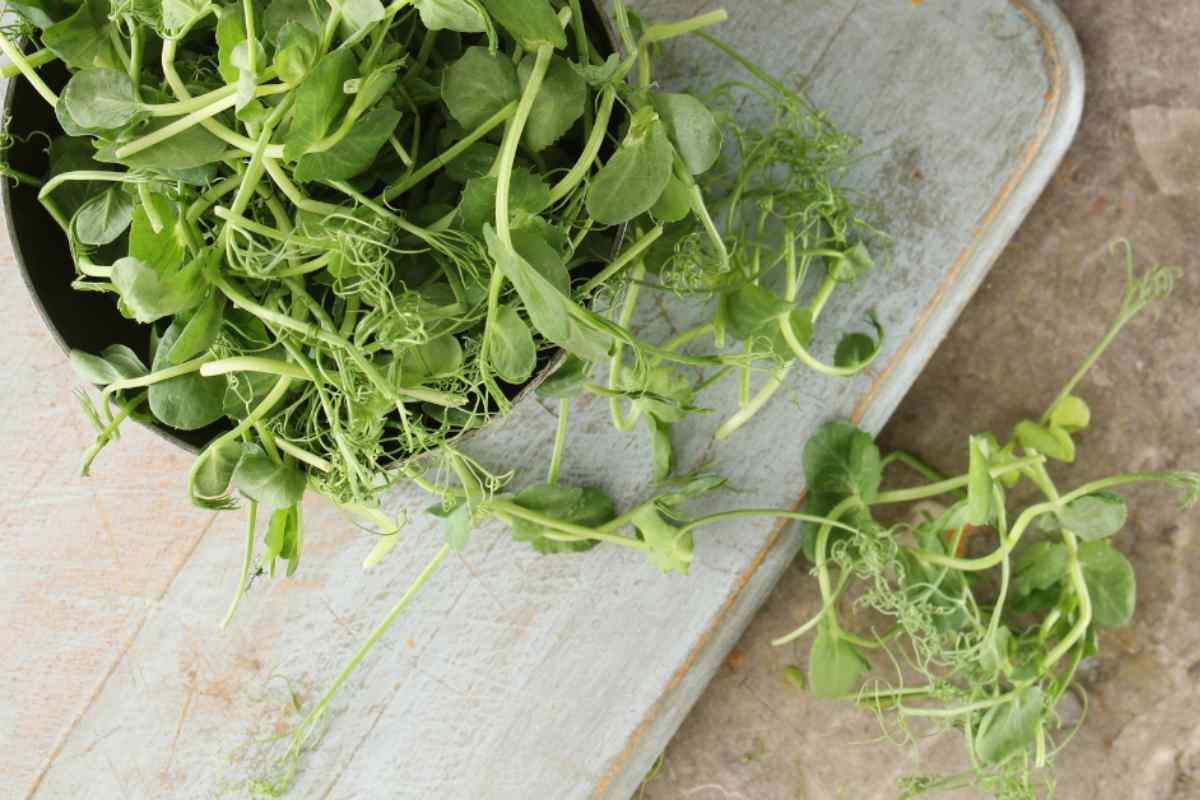
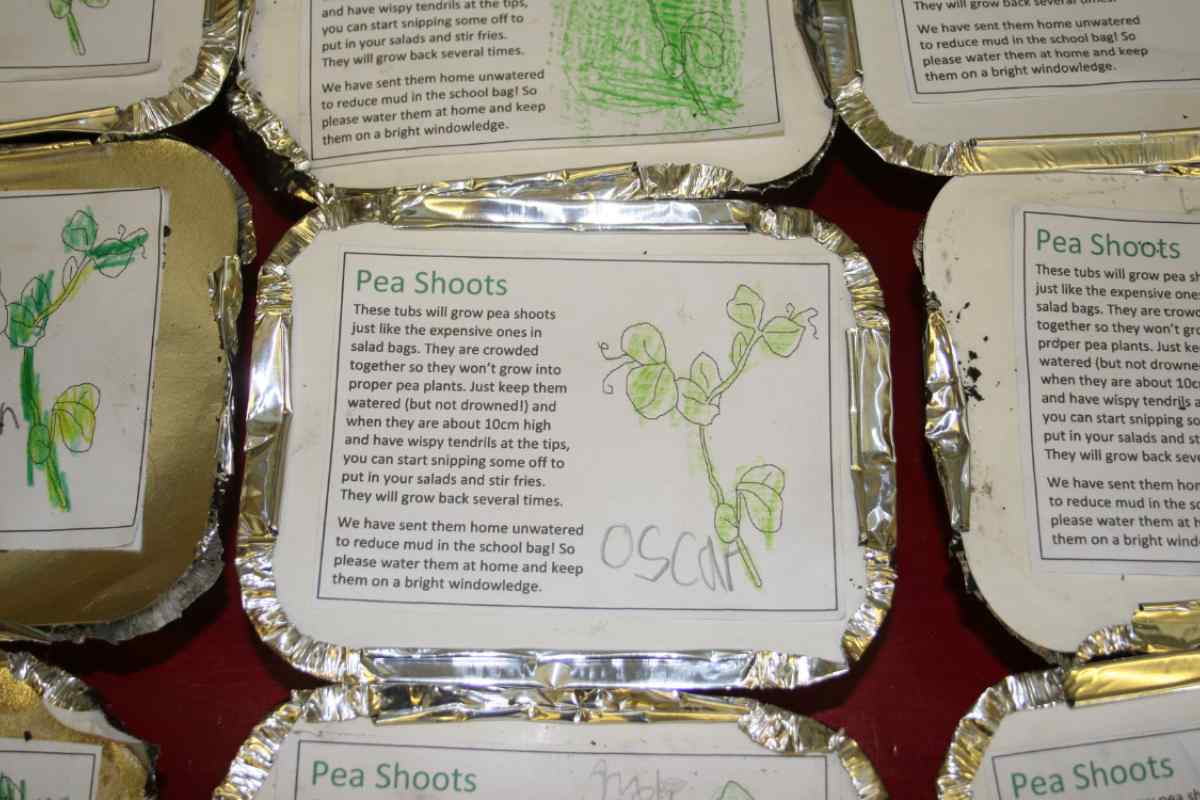
What to grow the pea shoots in
Decide what how are going to grow your shoots in. If you have plant pots and a tray to put underneath, then that's perfect.
But if you don't, you can use a lot of other things. Old ice cream tubs and used takeaway containers are perfect. All you need to do is poke some holes in the bottom for drainage, and then make sure you have a plate or tray big enough to go underneath so that the spare water doesn't run all over your worktops.
In school when working with a bigger group, we use a metal takeaway container because it has an easy lid for children to manipulate so that they can take the plants home to grow. But a plastic takeaway container would work just as well.
Grown ups should poke the holes in the bottom before starting the activity, unless you are working with only one child.
If you have a cork mat (the sort you put under a hot pan) and a skewer, you can help one or two children to safely poke holes in to the bottom. With a larger group it is difficult to keep the poking safe with only one adult. So it is best to poke the holes during lesson prep.
For a foil tray you need about 10-15 holes.
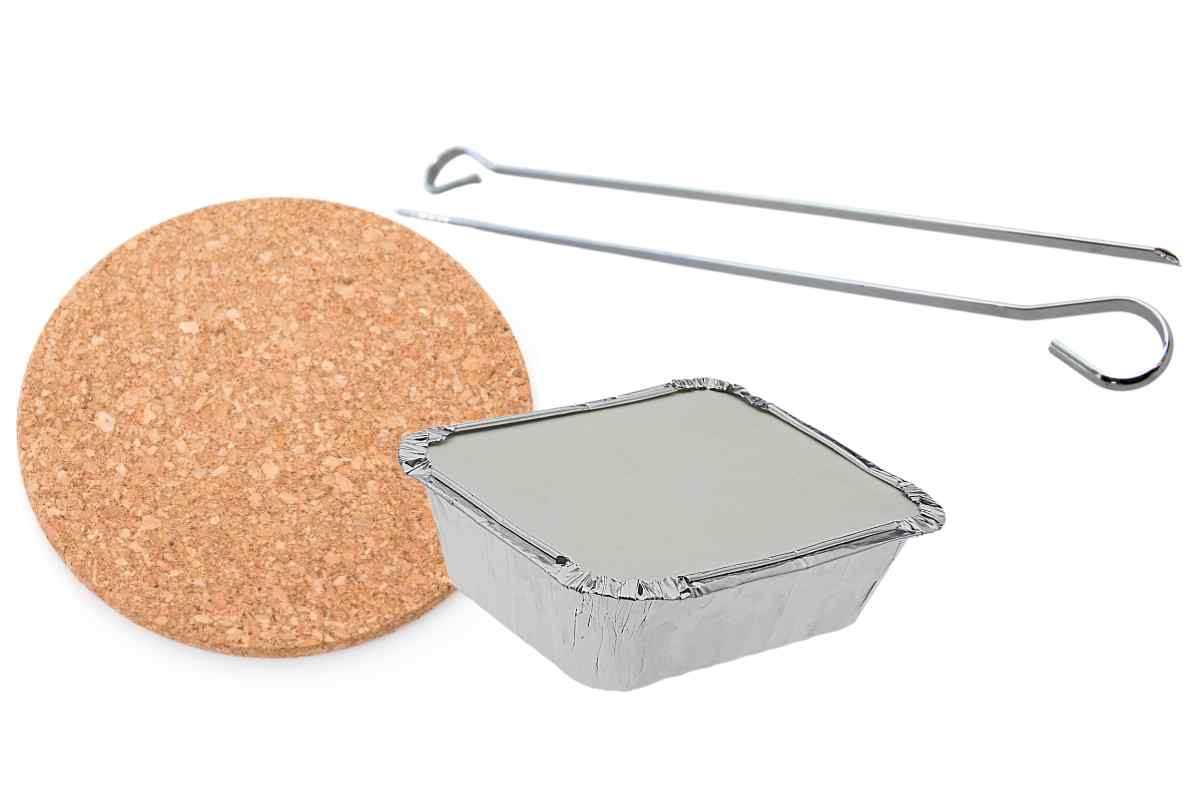
Where to get the peas from
You can get the peas from three places:
If you're working with a group, it's probably better to buy peas from the supermarket because seed peas can be quite expensive if you're sowing lots in one go.
The seed suppliers have spent years selecting the best seed peas for growing full plants which make pea pods. The money you pay for them is for their time and effort making sure the seeds they send you will make successful peas. And you're also paying to know what kind of pea you will end up with.
But you don't need successful pea plants for this activity because you're going to harvest them when they are only big shoots, they will never get chance to make peas and they will be planted too close together. So you don't need that certainty and expertise, it's just not worth it if you're only going to grow shoots.
If you go to a large supermarket, there will be dried (usually marrowfat) peas in boxes, they are usually in the dried foods section or alongside the tinned peas.
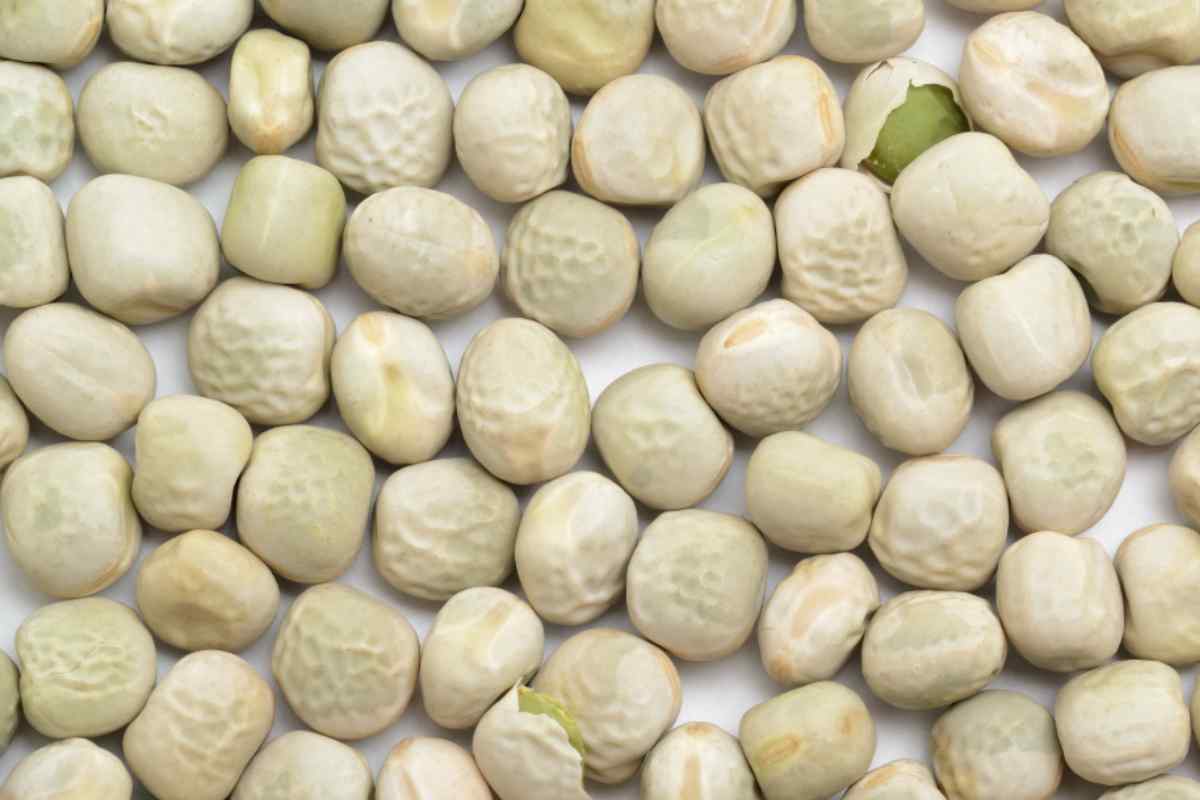
Should you soak the peas?
Ask children if they want to try soaking some of the peas.
It is not essential to soak the peas before planting. But you may get a better germination rate (a higher number of them sprouting) if you do soak them.
Just put them in water for up to 24 hours beforehand. Don't leave them any longer than that or they might start to go slimy or spoil or sprout.
The water will plump them up. It is quite fun for children to compare a dry pea with a soaked pea.
Preparation
Whether or not you soak, get your equipment set up.
You will need your pot, and some compost and the pea seeds.
If you are using homemade compost rather than sterile shop compost, you might decide to use gloves, especially if your child tends to put their hands in or near their mouth. Otherwise they can just carefully wash their hands afterwards.
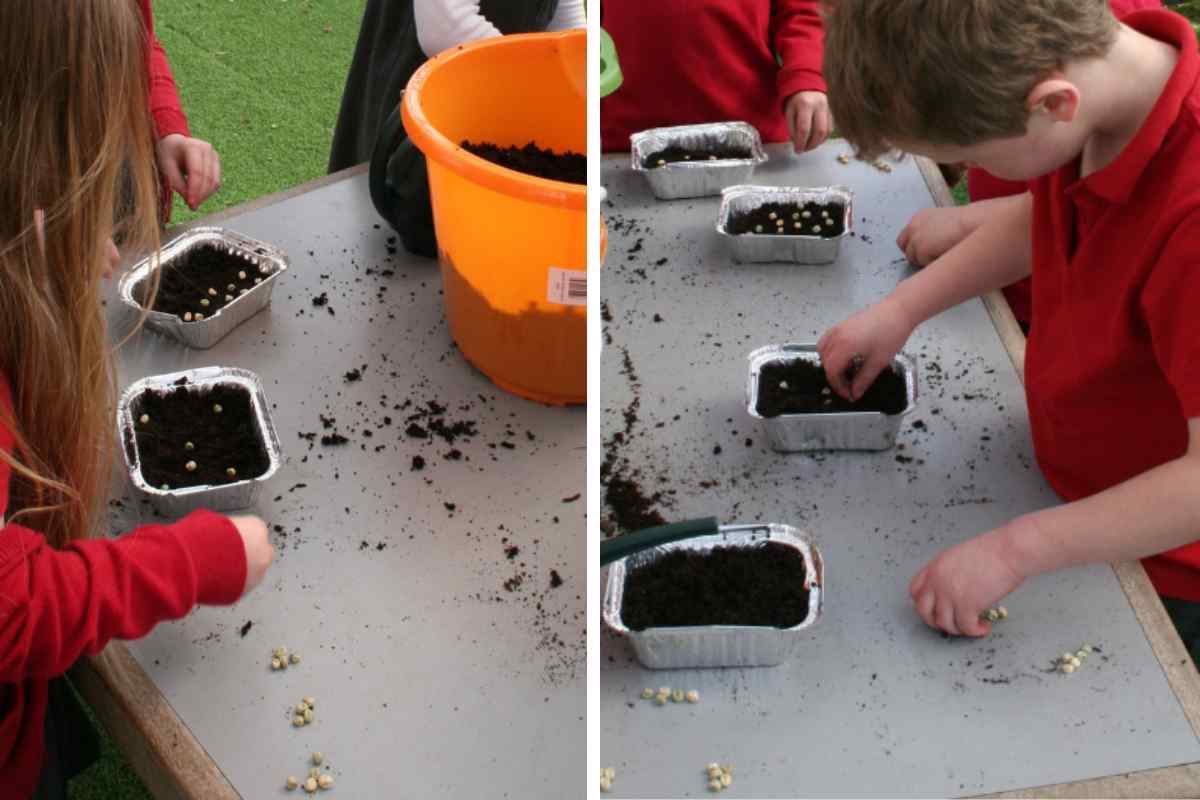
Sowing the seeds
Ask your child to fill the container 3/4 of the way up with compost.
This is great for practising motor skills. Many children will try to pick it up with one hand like a claw. Show them how to use two hands like a cup and compare how much they can pick up in one go.
Then they can add a layer of seeds.
You can sow them quite thickly, meaning quite closely together - you could have anything from 20-40 seeds in a foil container like this.
A note on how children sow large seeds
Children often like to place the seeds in one by one. This is fine if you have time as it is a great activity for practising finger and thumb pincer skills. But if you want them to sow quicker, you can show them how to scatter a handful and then use flat fingers to spread them around.
There is no right or wrong and both will give them chance to explore how the hard seeds and the fluffy soil behaves when they are moved around with differing pressures, and they can try to be gentle.
They should not worry if some of the soil and peas get mixed up. Reassure them that they will be mixed up afterwards anyway.
After they have added their seeds they should top up with more compost and pat it down gently with flat fingers, making sure all the peas are hidden.
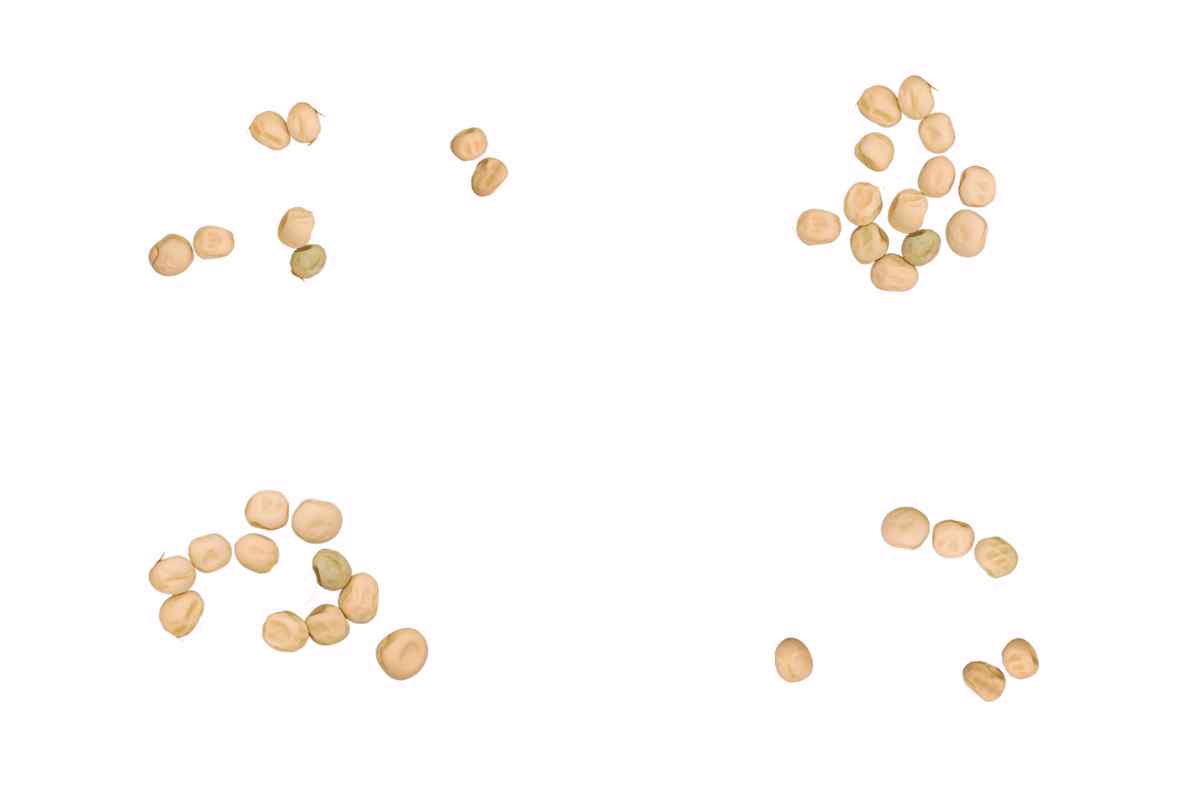
Adding in maths
If you want to have some fun with counting, you can get children to do any of the following:
If you want some extra information about subisiting, there is a great article here by Karen Wilding at EYMaths. Seed sowing lends itself perfectly to subitising activities.
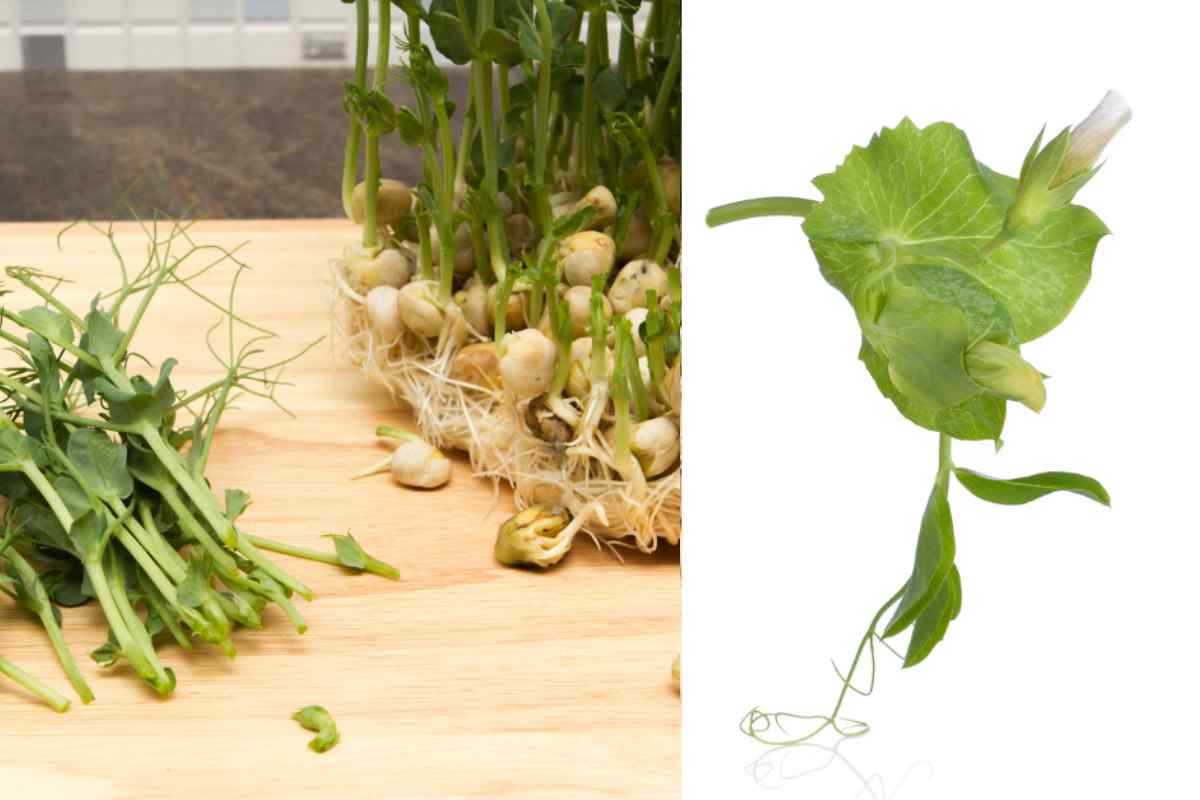
Caring for the peas
Place the tray or pot on a tray and water well. Keep watered and the peas will start to shoot within 1-2 weeks.
Harvest the peas whenever you like, once they are long enough to snip. Take a few at a time. Children can practice their scissor skills snipping them off.
Additional learning
Here is a great short video from Garden Store which covers the basics of growing pea shoots with children in a large window sill trough.
Class groups - sending them home
If you are growing with children in a childcare or school setting, you can use the foil containers and lids to send the peas home in.
DO NOT ask the children to water the peas in school as they will drip mud all the way home!
Instead, get children to put the lids on and label them and take them home with instructions.
We have a free download of a label which is designed to be glued on to the lid of a foil container.
If you would like the pdf of this label, please fill out your email below and we will send it to you.
Pea Shoot Lid Label
Yes! Please send me a copy of the pea shoot lid label, so I can grow pea shoots in class with a group and send them home with clear instructions to grow them on.


